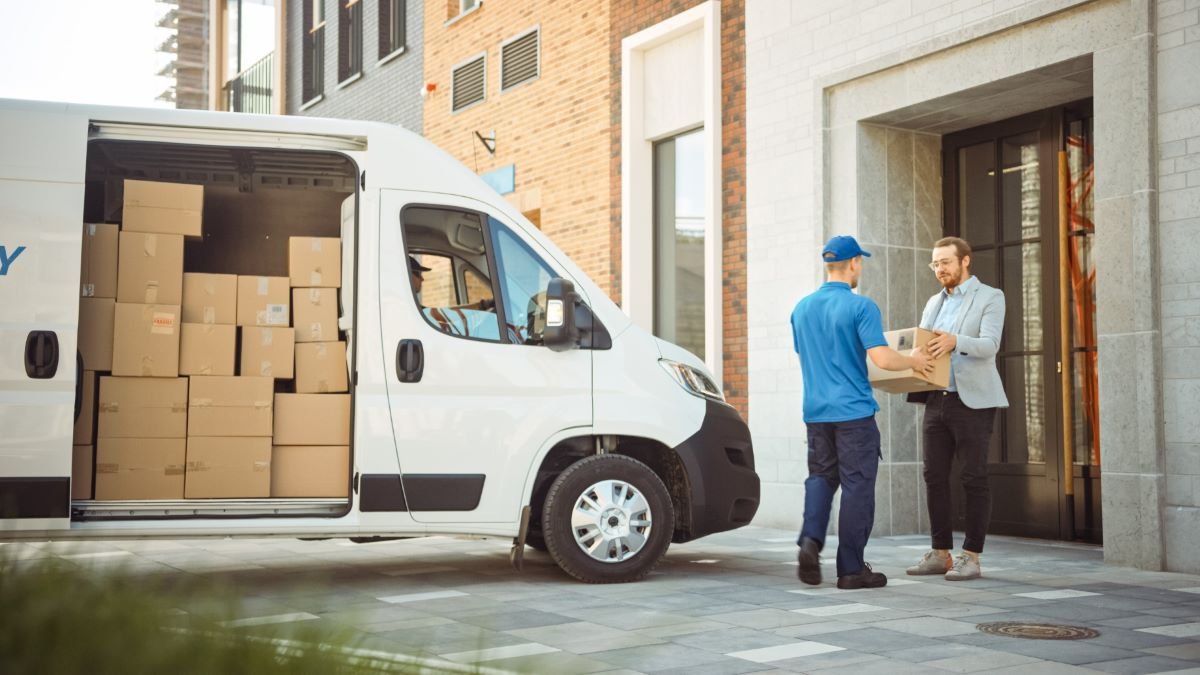
Is Mile Delivery the Future of Delivery?
Imagine a world where your packages are delivered faster, more efficiently, and with pinpoint accuracy. Welcome to the era of Mile Delivery – a revolutionary approach that is reshaping the way goods are transported from point A to point B. Get ready to dive into the future of delivery as we explore how Mile Delivery is changing the game for businesses and consumers alike.
How Mile Delivery Works
Picture this: you place an order online, and instead of waiting days for it to arrive, you receive a notification that your package is just one mile away. Intriguing, right? Mile delivery operates on the concept of utilizing local hubs or micro-fulfilment centres strategically placed within communities.
Once your order is processed, it’s quickly picked up by a delivery driver who heads out from the nearby hub with multiple other packages destined for locations close by. This efficient system allows for swift deliveries within a short radius without the need for long-haul transportation.
By minimizing travel distances and optimizing routes, mile delivery reduces carbon emissions and contributes to a more sustainable logistics network. Plus, with real-time tracking capabilities, both businesses and customers can stay updated on their shipments every step of the way.
Advantages of Mile Delivery
Mile delivery offers numerous advantages that are reshaping the way goods are transported. One of the key benefits is its speed and efficiency; by utilizing shorter distances between distribution centres and customers, packages can be delivered in a more timely manner. This not only improves customer satisfaction but also reduces overall delivery times.
Additionally, mile delivery helps to decrease carbon emissions and environmental impact since vehicles travel shorter distances, resulting in less fuel consumption. This eco-friendly approach aligns with the growing trend towards sustainable business practices. Furthermore, by optimizing routes and leveraging technology such as GPS tracking, companies can ensure accurate and reliable deliveries.
Moreover, mile delivery can lead to cost savings for businesses due to lower fuel expenses and increased productivity from faster deliveries. These financial benefits contribute to improved bottom lines for companies embracing this innovative approach to logistics.
Challenges and Limitations of Mile Delivery
As with any innovative concept, mile delivery also comes with its set of challenges and limitations. One of the primary concerns is ensuring timely deliveries in high-traffic areas or remote locations where navigation can be tricky. This may require advanced route optimization algorithms to overcome logistical hurdles efficiently.
Another hurdle to overcome is the potential increase in costs associated with shorter delivery distances per order, leading to a strain on profit margins for businesses implementing mile delivery services. Additionally, there might be issues related to scalability as companies expand their operations geographically.
Furthermore, maintaining consistent quality standards across numerous short-distance deliveries could prove challenging for businesses aiming to uphold customer satisfaction levels. Handling increased demand during peak hours without compromising on service quality poses yet another obstacle that requires strategic planning and resource management.
Comparison with Traditional Delivery Methods
When comparing mile delivery with traditional delivery methods, one of the key differences lies in the efficiency and speed of the service. Mile delivery utilizes a network of local couriers to transport goods quickly within short distances, reducing delivery times significantly.
Traditional delivery methods often involve centralized distribution centres and longer transit routes, which can lead to delays and increased shipping costs for businesses. With mile delivery, packages are picked up and dropped off at nearby locations swiftly, ensuring prompt deliveries to customers.
Moreover, mile delivery offers real-time tracking capabilities through mobile apps or websites, allowing both businesses and consumers to monitor the progress of their shipments accurately. This level of transparency enhances customer satisfaction and builds trust in the delivery process.
In contrast, traditional methods may lack this level of visibility and communication, leading to uncertainties regarding the status of deliveries. Additionally, mile delivery promotes eco-friendly practices by minimizing carbon emissions from shorter transportation distances compared to larger vehicles used in traditional logistics systems.
While both approaches have their merits, the agility and convenience offered by mile delivery make it a compelling option for businesses seeking fast and reliable shipping solutions in today’s competitive market landscape.
The Future of Mile Delivery: Predictions and Trends
As we look ahead to the future of delivery services, it’s clear that Mile Delivery is set to revolutionize the way goods are transported. With advancements in technology and logistics, we can expect to see a rise in efficiency and cost-effectiveness with this innovative approach.
One trend that is likely to continue gaining momentum is the use of drones for Mile Delivery. These unmanned aerial vehicles offer a fast and convenient way to transport packages over short distances, reducing delivery times significantly.
Another prediction for the future of Mile Delivery is the increased focus on sustainability. As environmental concerns grow, companies will prioritize eco-friendly practices such as electric vehicles and optimized route planning to minimize carbon emissions.
Moreover, AI-powered systems will play a crucial role in enhancing the accuracy and speed of deliveries. Machine learning algorithms can analyze data in real time to predict demand patterns and optimize delivery routes efficiently.
The future of Mile Delivery looks promising as technology continues to evolve, shaping a more efficient and sustainable supply chain ecosystem.
Potential Impact on Businesses and Consumers
The potential impact of mile delivery on businesses and consumers is significant. For businesses, implementing this innovative approach can lead to increased efficiency in their supply chain operations. By reducing the distance travelled for deliveries, companies can save on fuel costs and lower their carbon footprint.
Moreover, mile delivery can enhance customer satisfaction by offering faster and more convenient shipping options. Consumers today value quick turnaround times and seamless delivery experiences. With mile delivery, businesses can meet these expectations while also potentially reducing shipping costs for customers.
On the consumer side, the convenience of receiving packages quickly can drive brand loyalty and repeat purchases. In a world where instant gratification is increasingly sought after, mile delivery offers a solution that aligns with modern consumer preferences.
The potential impact on businesses and consumers alike is positive as mile delivery continues to shape the future of logistics and e-commerce.
Conclusion
As technology continues to advance, mile delivery is poised to revolutionize the way goods are transported from point A to point B. With its efficiency, speed, and cost-effectiveness, mile delivery has the potential to transform the logistics industry as we know it.
Businesses that embrace mile delivery stand to benefit from faster deliveries, lower costs, and increased customer satisfaction. Consumers can look forward to receiving their orders quicker than ever before.
While some challenges and limitations need to be addressed, such as regulatory issues and potential job displacement due to automation, the benefits of mile delivery cannot be ignored.
Mile delivery is not just a trend but likely the future of delivery services worldwide. As businesses adapt and consumers demand more efficient shipping options, mile delivery will continue to grow in popularity and reshape the e-commerce landscape for years to come.



